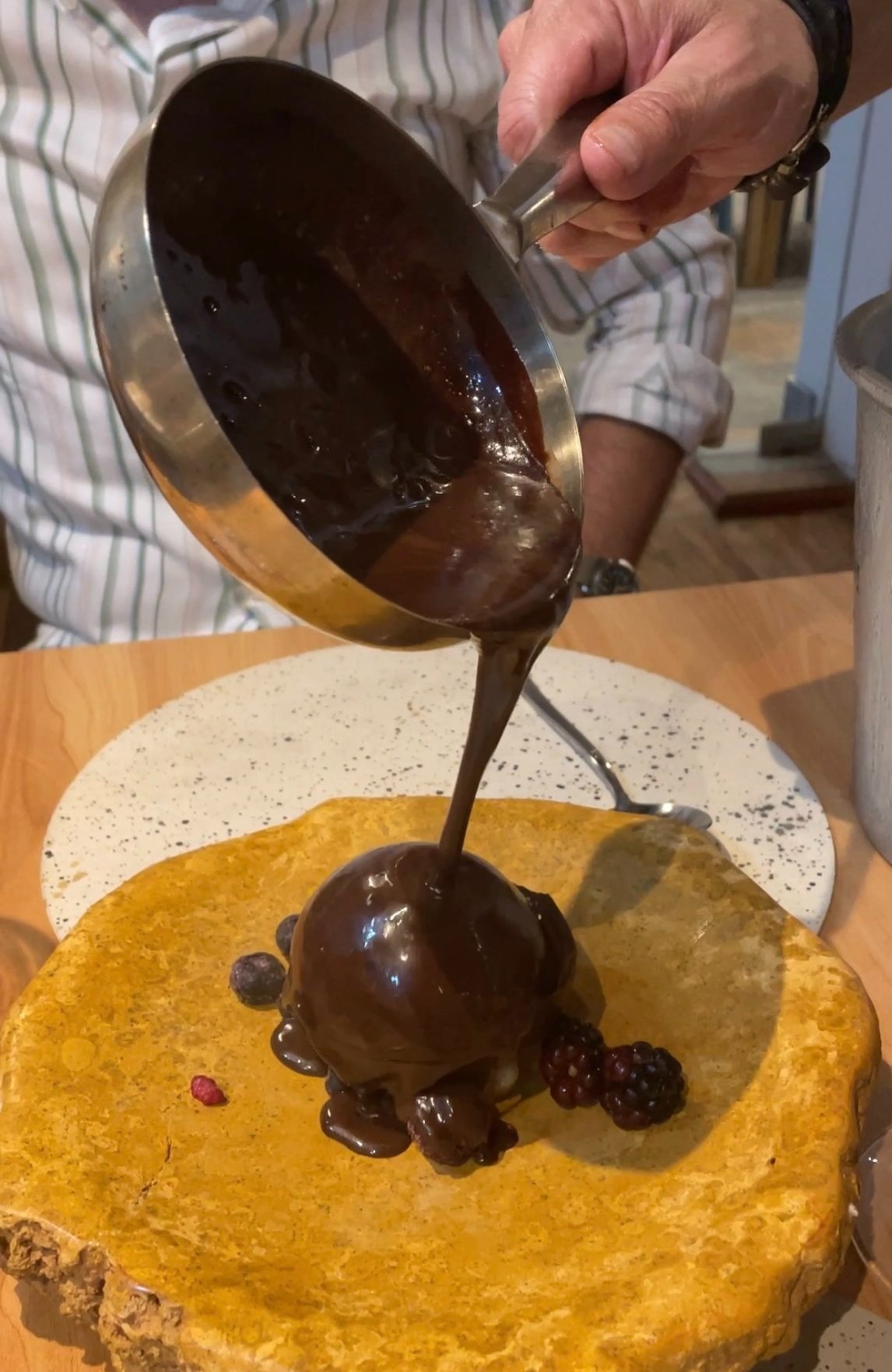San Salvador de Jujuy
History and fine cuisineWe always saw the capital city of Jujuy Province on our way to the Quebrada de Humahuaca. One Saturday in November we decided to settle our debt with it and visit it.
Two were the main objectives of the day: to see the Civil Liberty Flag and to explore the gastronomic offer of the city.
As soon as we arrived, taking advantage of the pleasant temperature, we decided to walk along the Belgrano pedestrian street to get to the Government Palace, a monumental building facing the main square, surrounded by a symmetrical garden where the sculptures of the great Lola Mora, representing Justice, Progress, Peace and Freedom, stand out. After climbing the imposing staircase of three flights, the visit to the Interpretation Center of the Civil Liberty Flag that begins with an illustrative and interactive video of the history of the exodus from Jujuy, its transcendent role in the course of the independence wars and the recognition it deserved from General Manuel Belgrano.
When the flag was being restored, the team in charge discovered that the frame had been covered by a more intense light blue, almost blue, Argentine flag. The emblem is a satin canvas, with the coat of arms approved by the General Constituent Assembly of 1813 painted in the center.
The Civil Liberty Flag is the fourth patriotic symbol, together with the Argentine National Flag, the Argentine National Coat of Arms and the Argentine National Anthem. It is, of course, the youngest, made official by the National Congress in 2015.
From the balcony of the Flag Hall you have a nice view of the square, of course also called Belgrano, which is distinguished by its flowering magnolia trees.
Then, a short walk took us to Viracocha restaurant, a tavern on the corner of Independencia and General Lamadrid streets. Meat empanada the Jujuy style, that is, without potatoes; then spicy llama stew with quinoa, ricotta and chili; and to close, a tremendous suspiro limeño, in its local version made with a syrup of sugar cane honey. Authentic regional food with generous dishes, so it is recommended to share and accompany it with beer or, in our case, with a fresh rosé from Finca Los Morros, to help soothe so much spiciness.
A siesta was a must at that point, so we checked in at the former Plaza Hotel, now well managed by the Howard Johnson by Wyndham chain. Located in the center of the city, with very good parking, we enjoyed the rest with a later visit to its heated pool and spa.
For the evening, the date was with the delicacies suggested by Walter Leal in his restaurant Finca Cocina Urbana.
In the center of the Paseo Casa Gamez, with a neat decor in light tones, the restaurant offers a menu with a preponderance of ingredients from the interior of Jujuy, many of them quite unusual. In the patio, a large bar connects the visitor with the kitchen in sight.
The dishes, all of them, were simply exquisite. Perhaps the service was a bit slow, it must be said, but being natives of northern Argentina we are well aware that time runs at a different pace in these latitudes and it is essential to be patient.
At the beginning, we were invited with purple corn paper with a superlative cremita of eleven chilies from the Yungas of Jujuy, fermented by Walter for a year in sugar cane honey. We were seduced both by the characteristic flavor of the proposal and its original presentation in a dried plant of rica rica, one of the many medicinal herbs typical of the puna.
Then a delicious Andean potato bread, baked in a sprig of aguaribay, which we already knew from our visit to Bad Brothers Wine Experience, the restaurant in Cafayate, which counts on Leal's consulting services.
As a starter -yes, it was just the starter- we honored the suggestion of the day: crispy sweetbreads in a demi-glace of cane honey and salt crystals with mashed blue potato and red onion. For the main course the creamy red corn was a pending temptation from Cafayate, but the blue potato gnocchi with toasted hazelnuts, slices of smoked trout and parked cheese won. The driver of @tripticity_, meanwhile, opted for the slow-cooked asado tapa with creamy red corn with tannat.
All this feast of tastes is served in its distinctive tableware, designed by the chef himself, in which local elements such as flagstone or ceramics stand out. The wine list is up to the mark and our choice was a Cabernet Franc Montesco, signed by the eminent Matías Michelini.
The sweet treat was a Finca trademark that we had been waiting to enjoy for a long time: its famous chocolate sphere filled with white mousse, accompanied by rich raspberries, with warm orange ganache that Walter himself pours over the ball to melt it. A show in itself, although it is only a prelude to the explosion of flavors that follows. While waiting for it, we were treated to an adapted version of the classic cane honey nougat, with amaranth popcorn and warm coffee. Another delight!
We left Finca Cocina Urbana with the certainty, although we are not experts, that it is one of the essential restaurants in the Argentine gastronomic offer. For its quality, of course, but fundamentally for its respect for the ancestral culture of the local people.
At the end of the day, satisfied with the history and gastronomy of Jujuy, we could only recognize that the province known for its famous Quebrada de Humahuaca is emerging as a destination that deserves an extra day in the capital, to be able to discover its attractive proposals at leisure.






























